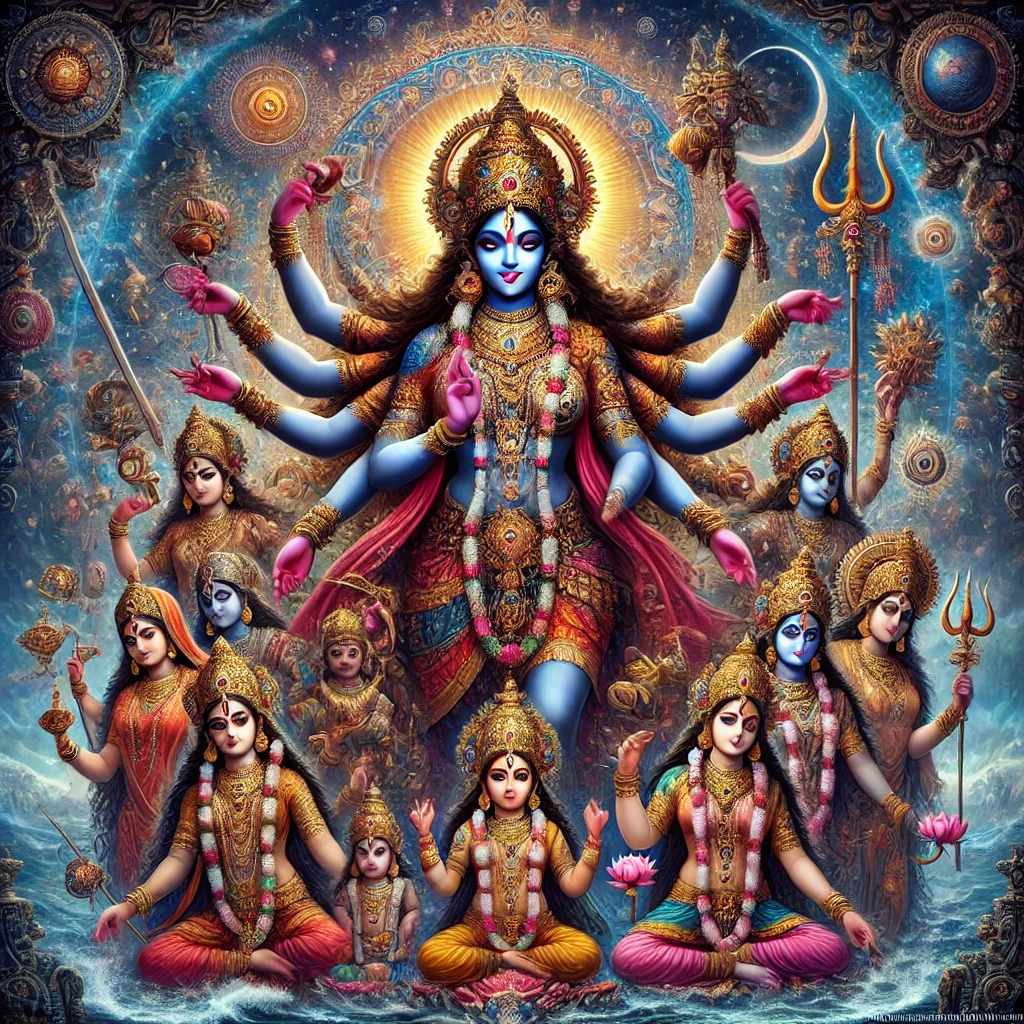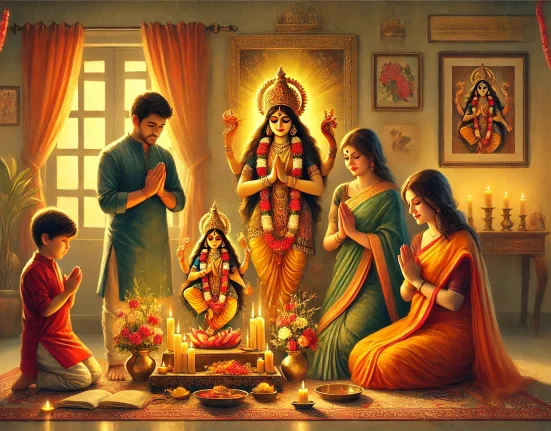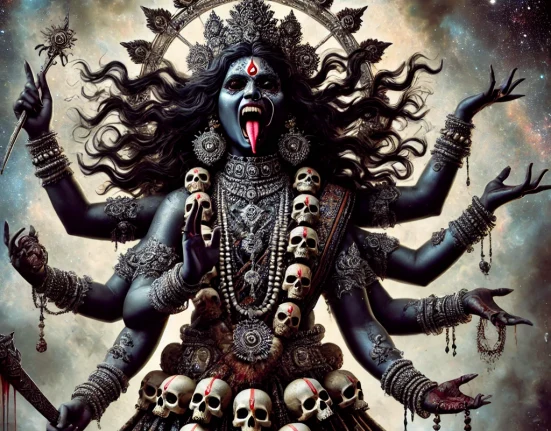Kali is one of the most revered and powerful goddesses in Hindu mythology, symbolizing time, destruction, and the boundless energy of creation. Her many forms represent different aspects of both the universal cycle and the human experience. In this blog, we will explore Kali’s 12 manifestations—each unique, each profound, and each a gateway to understanding life’s cyclical nature. These forms offer insights not only into her role in Hinduism but also into the archetypes she represents, revealing a deeper journey into transformation, protection, and ultimate liberation.
Understanding the Importance of Kali in Hinduism
Kali, a prominent figure in Hindu tradition, often defies easy categorization. As the fierce warrior goddess, she serves as a reminder of our own strength and resilience. Her forms extend beyond mere depictions; they embody powerful energies that followers believe influence aspects of both internal and external worlds. Kali is often feared and revered simultaneously, a paradox that mirrors her dual roles of creation and destruction.
Her forms are integral to Hindu ritual and philosophy, teaching lessons about protection, self-discipline, compassion, and letting go of attachments. They serve as spiritual archetypes, each embodying a different pathway to enlightenment. Below, we delve into the rich tapestry of the 12 primary forms of Kali, uncovering the significance and symbolism of each.
1. Dakshina Kali – The Benevolent Mother
Dakshina Kali is often depicted as the most compassionate form of Kali. She represents the motherly aspect, with her right foot forward, symbolizing benevolence. Dakshina Kali is seen as a protector, and her devotees believe that she is easily pleased with offerings of devotion. She is the bridge between creation and destruction, reminding us that destruction can sometimes pave the way for new beginnings.
Symbolism:
Dakshina Kali’s right-foot-forward stance conveys her nurturing and protective nature. Worshippers see her as a guiding force, helping them overcome obstacles and find peace.
2. Shamshan Kali – The Goddess of the Cremation Grounds
Shamshan Kali represents the transcendence of worldly illusions. She is the form of Kali found in the cremation grounds, where the cycle of life, death, and rebirth is evident. Devotees who meditate upon Shamshan Kali aim to let go of ego and attachments, seeking liberation from the wheel of samsara (the cycle of rebirth).
Symbolism:
Shamshan Kali teaches the importance of detachment. By contemplating her, worshippers confront their fears and learn to release attachments to worldly possessions.
3. Bhadra Kali – The Auspicious One
Bhadra Kali is an auspicious and protective form of the goddess. Often depicted with a more tranquil demeanor, Bhadra Kali is worshipped for her ability to remove evil influences and protect from negative forces. She is especially venerated in Southern India, where she symbolizes prosperity and safety.
Symbolism:
Bhadra Kali embodies protection and peace. Her presence reassures devotees, providing a sense of comfort and inner strength.
4. Mahamaya Kali – The Great Illusion
Mahamaya Kali represents the cosmic illusion, or maya, that veils the true nature of reality. She embodies the principle of illusion, teaching that what we see and experience in the material world is often a distortion of truth. Mahamaya Kali helps followers transcend illusions to reach spiritual enlightenment.
Symbolism:
Mahamaya Kali serves as a reminder that the material world is transient and deceptive. Her teachings urge devotees to seek the eternal, rather than the ephemeral.
5. Raksha Kali – The Protector
As the name suggests, Raksha Kali is the form of the goddess who provides protection from evil forces. She is worshipped in times of crisis, and devotees believe she can prevent harm and eliminate dangers. Raksha Kali has an intense energy that purifies and shields those who seek her blessing.
Symbolism:
Raksha Kali’s fierce energy wards off evil. Worshippers look to her for protection, strength, and courage, especially when facing adversities.
6. Guhya Kali – The Secret Goddess
Guhya Kali is a hidden, esoteric form of the goddess. This form is less commonly worshipped, as she represents secret knowledge and mysteries. Guhya Kali reveals hidden truths to those who are ready for her wisdom, often through intense meditation and spiritual practices.
Symbolism:
Guhya Kali is associated with mystery and spiritual initiation. She is the guide to hidden knowledge and inner wisdom, offering insights that lead to profound spiritual transformation.
7. Kripakari Kali – The Compassionate One
Kripakari Kali embodies compassion, mercy, and forgiveness. In this form, Kali displays her softer side, encouraging her followers to embrace forgiveness and let go of grudges. Kripakari Kali reminds us that true power often lies in compassion.
Symbolism:
Kripakari Kali helps devotees cultivate compassion within themselves, spreading kindness and understanding in the world.
8. Chamunda Kali – The Slayer of Demons
Chamunda Kali is one of the fiercer forms, known for her role as a demon-slayer. She is worshipped for her power to destroy negative energies, both external and internal. Chamunda Kali represents the victory of good over evil, helping devotees overcome the darker aspects of themselves.
Symbolism:
Chamunda Kali’s fierce nature represents courage and resilience. Worshippers turn to her in times of darkness, hoping to banish fear and self-doubt.
9. Siddha Kali – The Perfected One
Siddha Kali is the form associated with spiritual accomplishment and perfection. She represents the state of enlightenment and ultimate liberation, embodying the qualities of one who has achieved spiritual mastery. Devotees worship Siddha Kali to attain spiritual growth and self-realization.
Symbolism:
Siddha Kali is a reminder of the potential for spiritual ascension. She represents the rewards of perseverance and the power of self-mastery.
10. Hamsa Kali – The Swan-like Goddess
Hamsa Kali is associated with wisdom and discernment, symbolized by the swan. This form of Kali guides devotees toward knowledge, teaching them to distinguish between truth and falsehood. Hamsa Kali is revered by those on a path of wisdom and self-inquiry.
Symbolism:
Hamsa Kali embodies clarity and insight. Devotees look to her for guidance in making wise decisions and understanding life’s deeper truths.
11. Kamala Kali – The Lotus Goddess
Kamala Kali is the form associated with beauty, abundance, and joy. She embodies the positive aspects of life, such as prosperity, love, and spiritual fulfillment. Kamala Kali teaches devotees to appreciate life’s beauty while pursuing spiritual growth.
Symbolism:
Kamala Kali encourages followers to find balance between material and spiritual pursuits. Her energy inspires prosperity and contentment, reminding devotees to celebrate life’s blessings.
12. Bhavatarini Kali – The Redeemer of the Universe
Bhavatarini Kali is the form that redeems and guides the soul through the cycle of life and death. She is worshipped for her ability to help devotees transcend worldly attachments, guiding them toward liberation. Bhavatarini Kali is a compassionate goddess who assists her followers in reaching enlightenment.
Symbolism:
Bhavatarini Kali’s role as a redeemer reflects her commitment to helping souls evolve. She embodies mercy and wisdom, illuminating the path toward spiritual freedom.
Divine Complexity of Kali’s Many Forms
12 forms of Kali represent a powerful spectrum of qualities, each teaching a unique aspect of life and spiritual evolution. Whether one seeks protection, wisdom, compassion, or liberation, Kali offers a path. Her forms transcend the human experience, symbolizing energies that exist within and beyond us, guiding us toward our highest potential.
Embracing these aspects of Kali reminds us of the power within ourselves to overcome challenges, embrace change, and find peace. For followers, Kali is not only a goddess but also a force of transformation, one who lights the way to ultimate freedom and spiritual fulfillment.






Leave feedback about this